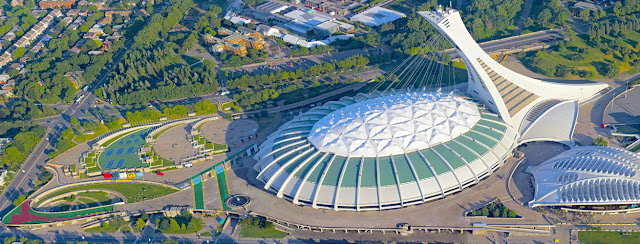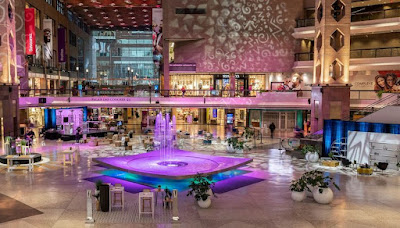The enchanting Montreal Botanical Garden lies a captivating world that often goes unnoticed by many visitors: the Montreal Insectarium. This extraordinary institution stands as a beacon of fascination, dedicated to unraveling the mysteries and marvels of the minuscule creatures that inhabit our planet. With its diverse collection of insects, interactive exhibits, and educational programs, the Insectarium offers visitors a unique opportunity to delve into the captivating world of entomology. The Montreal Insectarium traces its roots back to 1989 when it first opened its doors to the public. Founded by Georges Brossard, an avid entomologist, and philanthropist, the Insectarium quickly gained recognition as one of the premier insect museums in the world. Over the years, it has evolved and expanded, welcoming millions of visitors and continually enriching its collection of specimens. From its humble beginnings, the Insectarium has grown into a sprawling complex comprising multiple galleries, each dedicated to showcasing different aspects of insect life. Its evolution reflects the increasing interest and appreciation for insects among both scientists and the general public.
At the heart of the Montreal Insectarium lies its vast collection of insects, comprising thousands of species from around the globe. From delicate butterflies to formidable beetles, the diversity on display is nothing short of awe-inspiring. Visitors can marvel at the intricate patterns of butterfly wings, observe the peculiar behaviors of ants, or get up close and personal with giant cockroaches. One of the highlights of the Insectarium's collection is its butterfly exhibit, where visitors can wander through lush gardens populated by hundreds of colorful butterflies. The fluttering wings and delicate movements of these creatures create a magical atmosphere, transporting visitors to a world of beauty and wonder.
In addition to live exhibits, the Insectarium also houses an extensive collection of preserved specimens, providing valuable insights into the vast array of insect life on Earth. From rare and exotic species to common household pests, every specimen tells a unique story about the fascinating world of insects. Beyond its impressive collection, the Montreal Insectarium offers a range of interactive exhibits and educational programs designed to engage visitors of all ages. Through hands-on activities, immersive displays, and informative presentations, visitors can deepen their understanding of insect biology, behavior, and ecology.
One of the most popular attractions is the "Bug Lab," where visitors can observe live insects up close and learn about their unique adaptations and survival strategies. From camouflage and mimicry to chemical defenses and symbiotic relationships, the Bug Lab offers fascinating insights into the diverse ways in which insects interact with their environment. For younger visitors, the Insectarium offers educational workshops and guided tours tailored to different age groups. These programs provide a fun and engaging way for children to learn about the importance of insects in our ecosystem and the role they play in sustaining life on Earth.
In addition to its educational mission, the Montreal Insectarium is actively involved in conservation efforts aimed at protecting insect populations and their habitats. Through partnerships with conservation organizations and research institutions, the Insectarium supports initiatives to conserve endangered species, restore degraded habitats, and raise awareness about the importance of insect conservation. One such initiative is the Monarch Butterfly Conservation Program, which aims to protect and restore monarch butterfly habitat in Canada and beyond. By planting milkweed and other native plants, providing habitat for butterflies to breed and feed, and educating the public about the importance of monarch conservation, the program seeks to ensure the survival of this iconic species for future generations.
The Insect meseum also plays a vital role in scientific research, collaborating with researchers from around the world to study insect behavior, ecology, and evolution. Through field studies, laboratory experiments, and data analysis, scientists at the Insectarium contribute valuable knowledge to our understanding of insect biology and the role insects play in ecosystems worldwide. As it looks to the future, the Montreal Insectarium remains committed to its mission of inspiring curiosity, fostering appreciation, and promoting conservation of the insect world. Through ongoing research, education, and outreach efforts, the Insectarium seeks to deepen our understanding of insects and their vital importance to life on Earth.
With new exhibits, programs, and initiatives on the horizon, the Insectarium continues to evolve and adapt to meet the changing needs of its visitors and the broader community. Whether you're a seasoned entomologist or simply curious about the world of insects, a visit to the Montreal Insectarium promises to be a journey of discovery and wonder you won't soon forget.
















